Government Girl

Brief Synopsis
Cast & Crew
Dudley Nichols
Olivia De Havilland
Sonny Tufts
Anne Shirley
Jess Barker
James Dunn
Film Details
Technical Specs

Synopsis
Ed Browne, an automobile engineer, is summoned to Washington, D. C. to supervise the building of bomber planes for the War Construction Board. On his first night in the city, Ed discovers that there are no vacant hotel rooms until a desk clerk recognizes his picture from the paper and offers him room 2A. While Ed waits in the hotel lobby for his room to be readied, Elizabeth "Smokey" Allard, who had reserved 2A for the wedding of her roommate May to Sergeant Joe Bates, arrives. The desk clerk suggests holding the ceremony in the hotel lobby, and when the nervous groom loses the wedding ring, Smokey borrows a ring from Ed, who assumes that she is the bride. After the wedding, Smokey offers the newlyweds the use of her apartment, but when her landlady calls the M. P.'s, Joe is arrested, leaving behind his borrowed motorcycle. The next morning, Smokey is stopping people on the street to ask if they will drive the motorcycle back to its owner when she sees Ed again. Ed is looking for the War Construction Board, and when Smokey tells him that she works there, he whisks her away on a wild motorcycle ride to the office. There, Smokey is shocked to learn that Ed, the man who has bedeviled her, is her new boss. Ed still thinks that she is married until she explains the situation to him. Smokey is dating Dana McGuire, the ambitious counsel to Senator MacVickers. When Dana stands up Smokey for a dinner with the senator and his daughter, reporter Branch Owens, the head of the Washington Bureau, warns her that Dana is "looking for a victim to make a name for himself." The next day at the office, when Ed announces his plan to build new inland factories that will double the production capacity, Smokey cautions him to follow government procedures. Ed, an independent businessman who would rather be in the military than a "dollar a year man," chafes at the government red tape and consequently ignores Smokey's warning. Six months later, Ed has achieved his goal but earned the ill will of C. L. Harvester, who has lost his allocation of steel to Ed. When Harvester confronts Ed about stealing material that was earmarked for his project, Ed insults him and calls him an obstructionist. Threatening a Senate investigation, Harvester takes his information to Dana, Senator MacVickers and Washington socialite and power broker Adele Wright. Meanwhile, Ed realizes that he has fallen in love with Smokey, but is too late, as Dana has already proposed to her. One night, while Smokey is typing her letter of resignation at the office, she hears Ed and Branch arguing. When Branch then accuses Smokey of providing Dana with evidence against her boss, she steals the incriminating files and takes them home to burn them. At their apartment, May accuses Smokey of being in love with Ed when a government agent from May's department knocks on their door and asks their help in exposing Count Bodinski, a playboy, as a spy. Agreeing to help, the two women join Bodinski for dinner at his apartment that night. While the agents listen in the next room, Bodinski offers the two money for information and is subsequently arrested. The next day at the hearing, Dana is questioning Ed when Smokey enters the courtroom and returns the stolen files. She then testifies that her boss was only serving his country, and as the sound of American bombers roar overhead, she names the enemy cities that will soon be their targets. Running from the courtroom in tears, Smokey returns home, where Ed joins her. After telling her that the hearing has been canceled, he proposes and they embrace.

Director

Dudley Nichols
Cast

Olivia De Havilland
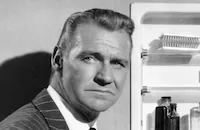
Sonny Tufts

Anne Shirley
Jess Barker
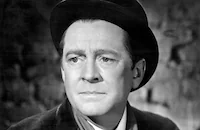
James Dunn

Paul Stewart

Agnes Moorehead
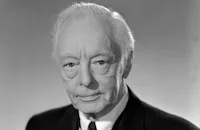
Harry Davenport

Una O'connor

Sig Ruman
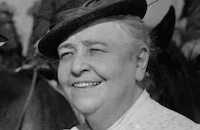
Jane Darwell

George Givot
Paul Stanton
Art Smith
Joan Valerie
Harry Shannon
Emory Parnell
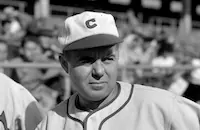
Ray Walker
Russell Huestis
Larry Steers
James Carlisle
Bert Moorhouse
Fred Norton
Demetrius Alexis

Larry Williams
Chester Carlisle
Harry Denny
Tom Costello
Ronnie Rondell
Charles Meakin

Howard Mitchell
Norman Mayes

Warren Hymer
Harry Tenbrook
Oliver Cross
Clive Morgan
Harold Miller
Major Sam Harris
Cy Ring
Bruce Edwards
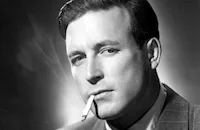
Lawrence Tierney

Ralph Dunn
Sam Lufkin
Al Hill
David Newell
George Ford
Edward Fielding
Joe Bernard

John Hamilton

Edward Keane
George Melford
Alex Melesh
Frank Moran
Chef Milani
J. Louis Johnson
June Booth
David Hughes
Don Kerr

Ian Wolfe

Charles Halton

Ivan Simpson
Virginia Gardner
Tom Burton
Harry Clay
Steve Winston
Ralph Linn
Josh Milton

James Kirkwood
Fred Fox
Babe Green
Frank Mcclure
Harry Bailey
Donald Hall
Louis Payne
Wally Dean
George Riley
Marion Murray
Shirley O'hara
Daun Kennedy
Margaret Landry

Mary Halsey
Barbara Coleman

Barbara Hale

Rita Corday
Patti Brill
J. C. Fowler
Crew
C. Bakaleinikoff
Albert S. D'agostino
Edward Donahoe
Al Fields
Roland Gross
Leigh Harline
Roy Meadows
Russell Metty
Dudley Nichols
Dudley Nichols
Frank Redman
Budd Schulberg
Lynn Shores
Darrell Silvera
J. D. Starkey
Edward Stevenson
James G. Stewart
Vernon L. Walker

Videos
Movie Clip


Film Details
Technical Specs

Articles
Government Girl
In its best moments Government Girl has a goofy exuberance: The director is Dudley Nichols, and it was his first time at the helm of a film, though he'd long been a successful screenwriter. Nichols was one of the writers on Bringing Up Baby (1938), and his penchant for slapstick mayhem is evident in Government Girl: In so many of her films, de Havilland is a generally ladylike presence, but we often see Smokey dashing about madly, narrowly avoiding collisions in hallways, or sliding across the floor in her stockinged feet. (For some reason, one of the quirks of Smokey's character is that she's always slipping out of her shoes, even at work.) Tufts' Browne looks on, laconically, with amusement: His job is to be the regular joe who ends up making good even in the midst of the government machine and who, of course, gets the girl in the end - though first he has to wrest her away from the ambitious but unworthy politician, played by Jess Barker, who has dazzled her.
In Government Girl, Tufts is a low-key presence, so low-key that he barely registers. Born Bowen Charlton Tufts III, to a moneyed family in Boston's Back Bay, Tufts was a boy soprano at his parish church, though he was kicked out for blowing a joke-shop "razzberry" horn one Sunday during the service. A comic actor might have been born then and there, although Tufts went the conventional route and attended Philips Exeter Academy, and then Yale, before deciding to study as an opera singer. (He actually auditioned with the Metropolitan Opera.) Tufts ditched opera to become a nightclub singer, and played a few roles on Broadway before finding his way to Hollywood, where he became a semi-successful leading man, partly because so many of the industry's A-list actors were serving in the war.
The chemistry between Tufts and de Havilland wasn't the greatest, and it shows in Government Girl. A skilled dramatic actress, de Havilland doesn't seem particularly at home with comedy, at least in Government Girl: Despite the picture's broad comic touches and antic physicality, she's clearly hanging back. That may have to do partly with the script. The film was adapted from an Adela Rogers St. Johns short story - the initial script was by Budd Schulberg, a writer de Havilland approved of. But when Schulberg was drafted into the navy, RKO assigned the project to Nichols, who then rewrote the script himself. Although it had been rumored that de Havilland and Nichols didn't get along, de Havilland claims otherwise. "We had an excellent relationship," she said later. "He was a charming, rather distinguished man, and we became very good friends."
But de Havilland was unhappy for other reasons. Joseph Cotten was originally slated to play Browne; somehow, Tufts ended up with the role instead, a choice that didn't exactly please de Havilland. And there were other problems: Under contract to Warner Bros. at the time, de Havilland had made Princess O'Rourke for the studio earlier that year; it was a troubled picture, and an unhappy experience for de Havilland. Seemingly as punishment for whatever disagreements they had over that film, Warner Bros. then lent de Havilland to David O. Selznick, who passed her on to RKO to make Government Girl. That, apparently, was the last straw for the actress, who had completely lost patience with her home studio. She filed a lawsuit against Warner Bros. that would become a landmark case, leading to the passage of what came to be known as the de Havilland Law, setting a seven-year limit on the contracts of studio players.
That, perhaps, is the most lasting legacy of Government Girl. The film did reasonably well with audiences at the time, though critics didn't have particularly kind words for it. The notoriously stuffy New York Times critic Bosley Crowther, for one, was not amused, calling the film "a muddled and curiously uneven attempt to make several kinds of sport out of wartime crowded conditions and general government confusion in Washington. In some spots, his film is amusing. In long stretches, it is hopelessly dull." But even if he couldn't bring himself to fully praise de Havilland's performance, he couldn't damn it, either: "Olivia de Havilland throws herself around quite nicely as [Tuft's] variably solicitous office girl." Crowther seems to have picked up on the fact that she was going through the motions - but, being a consummate pro, she made sure the motions were at least adequate.
SOURCES:
IMDb
The New York Times
The Hollywood Reporter
Axel Nissen, The Films of Agnes Moorehead, Scarecrow Press, 2013
Producers: Edward Donahue, Dudley Nichols
Director: Dudley Nichols
Screenplay: Dudley Nichols (screenplay); Adela Rogers St. Johns (short story); Budd Schulberg (adaptation)
Cinematography: Frank Redman
Music: Leigh Harline
Film Editing: Roland Gross
Cast: Olivia de Havilland (Elizabeth "Smokey" Allard), Sonny Tufts (E.H. "Ed" Browne), Anne Shirley (May), Jess Barker (Dana), James Dunn (Sergeant Joe), Paul Stewart (Branch), Agnes Moorehead (Mrs. Wright)
[black-and-white, 93 minutes]
By Stephanie Zacharek

Government Girl
TCM Remembers - Lawrence Tierney
A SCREEN TOUGH GUY WHO WAS MEANER THAN A JUNKYARD DOG
Lawrence Tierney, one of the screen's toughest tough guys, died February 26th at the age of 82. He first startled audiences with his impassioned work in the 1940s but Tierney's rowdy off-screen life eventually pushed him out of the limelight. Though he kept working in small parts, Tierney found a new generation of fans with a few memorable roles in the 80s and 90s.
Tierney was born March 15, 1919 in Brooklyn, New York. He grew up in New York and was a track star in school before becoming interested in acting. (His two brothers also became actors though they changed their names to Scott Brady and Ed Tracy.) He went through the usual period of stage appearances before getting bit parts in little-remembered films. His first credited role was in Sing Your Worries Away (1942) but Tierney quickly made his mark playing the title role in Dillinger (1945). A string of memorable roles followed in films like San Quentin (1946), The Devil Thumbs a Ride (1947), Born to Kill (1947) and the Oscar-winning circus drama from director Cecil B. DeMille, The Greatest Show on Earth (1952) in which Tierney played the villain responsible for the epic train wreck toward the film's conclusion. However, Tierney had a knack for real-life trouble and was arrested several times for disorderly conduct and drunken driving. By the end of the 50s he only found sporadic acting work, sometimes not working for several years between films. During this period his best-known work was in Custer of the West (1967) and Andy Warhol's Bad (1977).
Slowly in the 1980s, Tierney landed small but frequently noticable parts in Hollywood films such as Prizzi's Honor (1985) and The Naked Gun (1988). He appeared on TV shows like Hill Street Blues, Star Trek: The Next Generation and Seinfeld (as Elaine's father). In 1992 that changed when Quentin Tarrantino cast Tierney as the crime boss in Reservoir Dogs, an unforgettable part that gave him new fans. While the subsequent roles or films didn't get any bigger, Tierney was finally a recognized name. One of his oddest roles was the half-hour Red (1993) based on the infamous mid-70s Tube Bar tapes where a real-life bar owner responds with startlingly over-the-top remarks to prank phone calls. (If that sounds familiar it's because The Simpsons based Moe's responses to prank calls on these tapes. Tierney provided a voice in the 1995 Simpsons episode "Marge Be Not Proud.") Tierney's last film appearance was in Armageddon (1998)!
By Lang Thompson
CHUCK JONES, 1912 - 2002
Animator Chuck Jones died February 22nd at the age of 89. Jones may not have boasted quite the name recognition of Howard Hawks or John Ford but he was unquestionably one of the greatest American directors. His goals might have been primarily to entertain, which he did so wonderfully that his 50 and 60 year old cartoons seem fresher than most anything produced in the 21st century. But Jones displayed a sense of movement, timing and character barely equalled elsewhere. Literary critics have a saying that while there are no perfect novels there are certainly flawless short stories. Several of Jones' cartoons reach a perfection that Hawks and Ford could only have dreamed about.
Jones was born September 21, 1912 in Spokane, Washington but grew up in Hollywood. As a child he would watch films by Charlie Chaplin and others being made in the streets, absorbing the process and supposedly even appearing as an extra in Mack Sennett shorts. After graduating from L.A.'s Chouinard Art Institute (now California Institute of the Arts), Jones started selling pencil drawings on street corners. He soon landed a job in 1932 with ground-breaking animator Ub Iwerks as a cel washer (somebody who removes ink from the expensive celluloid frames so they could be reused). The following year Jones began to work for Leon Schlesinger Productions which was sold to Warner Brothers. There he directed his first film, The Night Watchman in 1938.
Jones would stay at Warners for almost 25 years until it closed the animation division. Here is where Jones did some of his most-beloved work, putting Bugs Bunny, Daffy Duck, the Road Runner, Marvin Martian and numerous others through many of their most memorable exploits. Who can forget Bugs and Daffy's hilariously convoluted arguments about hunting season in Rabbit Seasoning (1952) and Duck Rabbit Duck (1953)? Or the Coyote's tantalized, endless pursuit of the Road Runner? What's Opera Doc? (1957) sending Elmer and Bugs to Bayreuth? A cheerfully singing and dancing frog that, alas, only performs for one frustrated man? Daffy tormented by the very elements of the cartoon medium in Duck Amuck (1953)? That's only a fraction of what Jones created while at the Warners animation studio, affectionately known as Termite Terrace. This building on the Warners lot boasted an array of individualist talents that Jones, like Duke Ellington, could pull into a whole. There was voice artist Mel Blanc's impeccable timing, writer Michael Maltese's absurdist love affair with language, music director Carl
Stalling's collaged scores and perhaps best of all a studio that knew enough to just leave the gang alone so long as the cartoons kept coming.
After Warners shuttered its animation division in 1962, Jones moved to MGM where he worked on several Tom & Jerry cartoons, his inimitable lines always immediately apparent. In 1966 he directed How the Grinch Stole Christmas from Dr. Seuss' book, one of the finest literary adaptations. A feature version of Norman Juster's classic The Phantom Tollbooth followed in 1969. Along with his daughter Linda, Jones was one of the first to see the value of original animation art and in the late 70s began a thriving business. (For more info see http://www.chuckjones.com.) Jones made cameo appearances in Joe Dante's Gremlins (1984) and Innerspace (1987). In 1989, he wrote a touching and funny memoir, Chuck Amuck, that's pretty much essential reading.
Jones won an Best Short Subject Cartoons Oscar for The Dot and the Line (1965), having earlier been nominated twice in 1962. His Pepe LePew film For Scent-imental Reasons (1949) and public-health cartoon So Much for So Little also won Oscars though not for Jones himself. In 1996 he was awarded an honorary Oscar "for the creation of classic cartoons and cartoon characters whose animated lives have brought joy to our real ones for more than a half century."
By Lang Thompson
GEORGE NADER, 1921 - 2002
Actor George Nader, best known for the B-movie anti-classic Robot Monster, died February 4th at the age of 80. One-time co-star Tony Curtis said, "He was one of the kindest and most generous men I've ever known. I will miss him." Nader was born in Pasadena, California on October 19, 1921 and like many other actors started performing while in school. His first film appearance was the B-Western Rustlers on Horseback (1950) and he made other appearances, often uncredited, before the immortal Robot Monster in 1953. This dust-cheap, charmingly inept film (originally in 3-D!) features Nader as the father of Earth's last surviving family, everybody else having been wiped out by a gorilla in a diving helmet. Shortly after, Nader landed major roles in RKO's Carnival Story (1954) and with Curtis in Universal's Six Bridges to Cross (1955), bringing a beefy charm that earned him numerous fans. As a result, in 1955 Nader shared a Golden Globe for Most Promising Male Newcomer. He then appeared in numerous lower profile studio films before closing out the decade playing Ellery Queen in a short-lived TV series. He relocated to Europe in the sixties where he found steady work. As secret agent Jerry Cotton, he made a series of spy thrillers which earned him a cult reputation in Europe, starting with Schusse aud dem Geigenkasten (aka Operation Hurricane: Friday Noon) (1965). The eighth and final entry in the series was Dynamit in gruner Seide (aka Dynamite in Green Silk) (1968). His film career ended in the mid-70s when a car wreck damaged his eyes so that he could no longer endure a film set's bright lights. Nader began writing novels, most notably the recently reprinted Chrome (1978), an acclaimed science fiction novel with openly gay characters.
By Lang Thompson
TCM REMEMBERS HAROLD RUSSELL, 1914 - 2002
Oscar-winning actor Harold Russell died January 29th of a heart attack at age 88. As a disabled veteran whose hands had been amputated in The Best Years of Our Lives (1946), Russell won Best Supporting Actor but also an honorary award "for bringing hope and courage to his fellow veterans." This made Russell the only person to receive two Oscars for the same role. Russell was born in Nova Scotia on January 14, 1914 but grew up in Cambridge Massachusetts. He joined the US Army after the attack on Pearl Harbor and while training paratroopers lost both hands in an accidental explosion. He then made a training film where director William Wyler saw Russell. Wyler was so impressed that he changed the character in The Best Years of Our Lives from a man with neurological damage to an amputee so that Russell could play the part. After winning the Oscar, Russell followed Wyler's advice and went to college, eventually running a public relations company and writing his autobiography. He made two more film appearances, Inside Moves (1980) and Dogtown (1997), and appeared in a few TV episodes of China Beach and Trapper John MD. Russell made waves in 1992 when he decided to sell his acting Oscar to help cover expenses of his large family. The Motion Picture Academy offered to buy the statue for $20,000 but it sold to an anonymous bidder for $60,000. About the other statute, Russell said, "I'd never sell the special one. The war was over, and this was the industry's way of saying thank you to the veterans."
By Lang Thompson
TCM Remembers - Lawrence Tierney
Quotes
Trivia
Notes
News items in Hollywood Reporter yield the following information about the production: Joseph Cotten was originally considered for the male lead and Gladys George was slated to play "Mrs. Wright." David Hempstead was initially scheduled to produce the film, but when he had to bow out of the project because of scheduling conflicts, Dudley Nichols stepped in. Russell Metty filmed backgrounds in Washington, D.C. This was writer Nichols first project as director and producer, and the first associate producer task for Edward Donahoe, a former assistant director at RKO. A New York Times article notes that Sonny Tufts, who was borrowed from Paramount to star in this film, benefited from his "4F" (physically unfit) military status as it boosted him to stardom while other leading men went to war. Modern sources add that Olivia De Havilland did not want to appear in this picture, but was forced to do so by an arrangement in which Warner Bros. loaned her to David O. Selznick, who then loaned her to RKO.














